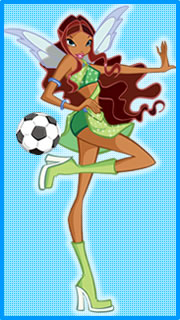Hi! Do you think soccer is a masculine sport? There is nothing wronger! Here’s the short and simple soccer rules you need to know!

No hands!
I bet you knew that one. Most people who know nothing about soccer still know that you aren’t supposed to use your hands unless you’re the goalie. Believe it or not, there is also a situation in which the goalie cannot use his/her hands. This is sometimes called the back-pass rule. Goalkeepers cannot pick up a pass that came directly from one of their teammates. In this case, the goalkeeper must use his feet.
Throw-ins: A throw-in is taken when the ball crosses a sideline and leaves the field. The two basic soccer rules for a proper throw-in are to have both feet on the ground and to throw the ball with both hands over the head.
Corner Kicks & Goal Kicks: A corner kick or goal kick is taken when the ball leaves the field across the endline – you know, the end of the field. If the offensive team kicks it out, play is restarted with a goal kick. If the defensive team kicks it out, play is restarted with a corner kick. The goal kick is taken from anywhere inside the “goalie box” as it is affectionately called. It can be taken by any player, not just the goalkeeper. The corner kick is taken from – yes, you guessed it – the corner nearest to where the ball left the field.
Fouls: A player cannot kick, trip, jump at, charge, strike, push, hold, or spit at an opponent. Soccer can be a physical, contact sport when two opposing players both want the soccer ball!
Penalty Kick: A penalty kick results from a contact foul or hand ball by the defending team within the penalty area – the large box on either end of the field. So it’s a type of direct kick also. The ball is placed on the penalty spot, 12 yards in front of the center of the goal. All players must remain outside the penalty area and the penalty arc until the ball is kicked. The goalkeeper must have both feet on the goal line until the ball is kicked. If after the ball is kicked, it rebounds off of the goal or the keeper and stays on the field, the ball is “live” and anyone can play it.
Yellow and Red Cards: This is the way punishment is given in soccer. If a player is given two yellow cards in the same game, that is equal to a red card. A red card can be given at any time without the player first receiving a yellow card. When a player gets a red card, they must leave the game and their team must play short. An ejected player cannot be replaced.
Offside: A player is in an offside position if he is nearer to his opponents' goal line than both the ball and the second last opponent.
A little curiosity! Women have been playing "football" for as long as the game has existed. Evidence shows that an ancient version of the game (Tsu Chu) was played by women during the Han Dynasty (25-220 AD). The first European feminine team was probably founded by Nettie Honeyball in England in 1894. It was named the British Ladies Football Club!

